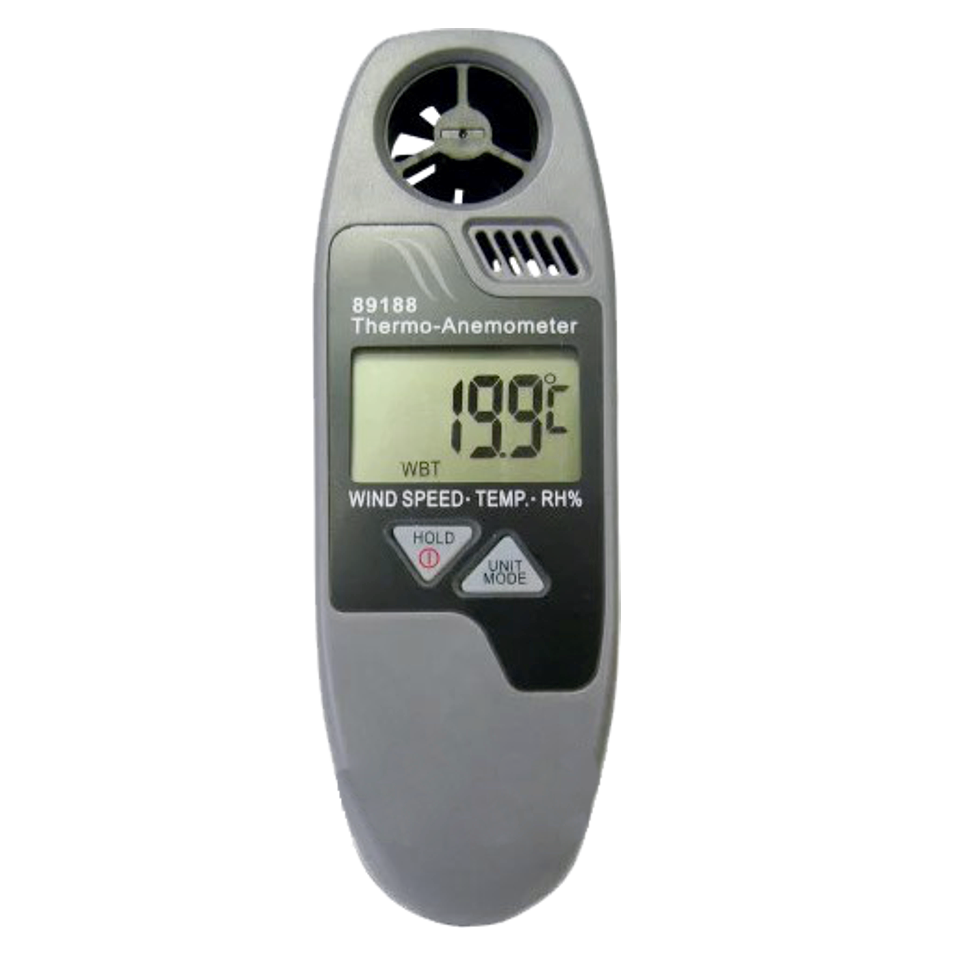How to Maintain and Take Care Of Your Anemometer to Make Certain Longevity
How to Maintain and Take Care Of Your Anemometer to Make Certain Longevity
Blog Article
All You Need to Learn About Anemometers: How They Work, Why They Matter, and Where to Utilize Them
Anemometers, though often ignored in the world of scientific tools, play a critical function in various areas, using beneficial understandings right into wind speed and air movement patterns. As we delve right into the intricacies of anemometer technology, we will certainly uncover the inner functions of these tools, their value, and the vital factors to consider when picking the appropriate anemometer for details applications.

Anemometer Essentials
A necessary instrument used to gauge wind speed and instructions, the anemometer plays a vital role in meteorology and various industries. An anemometer generally includes 3 or four mugs that turn in the wind, a vane that points into the wind, and sensors to track the turnings or activities. By determining the rotations or activities over a certain amount of time, the anemometer can figure out wind rate. The vane aids establish wind instructions by directing right into the wind, providing beneficial data for weather condition forecasting, air travel, maritime operations, environmental monitoring, and wind energy applications.
There are numerous sorts of anemometers readily available, consisting of mug anemometers, vane anemometers, hot-wire anemometers, and sonic anemometers, each with its one-of-a-kind features and applications. Mug anemometers are frequently made use of for basic wind speed dimensions, while vane anemometers are chosen for directional measurements. Hot-wire anemometers appropriate for low airspeeds, and sonic anemometers are suitable for high-precision dimensions in research study and industrial setups. Recognizing the fundamentals of anemometers is essential for accurate wind data collection and evaluation across various markets.
Principles of Anemometer Operation
Building on the foundational understanding of anemometer basics, the principles of anemometer operation elucidate the mechanics behind wind speed and instructions measurements. Cup anemometers, for circumstances, have three or more mugs that catch the wind, causing them to rotate quicker as the wind rate increases. Hot-wire anemometers count on a heated wire that cools down as wind passes over it, with the rate of cooling establishing the wind speed.
Importance of Anemometers
Anemometers play a vital duty in measuring wind rate and instructions, supplying important data for weather condition projecting, climate researches, ecological surveillance, and aeronautics operations. Meteorologists count on anemometers to collect accurate wind data, helping them understand weather condition patterns, predict tornados, and problem timely cautions to the public. Wind ranch operators make use of anemometers to evaluate wind problems and take full advantage of electrical energy manufacturing from wind turbines.
Applications Across Various Industries
Applications of anemometers span across varied industries, showcasing their convenience and utility beyond meteorology. In the renewable resource field, anemometers play an essential duty in analyzing wind problems for wind ranch positionings, guaranteeing optimum power production. Industries like building and mining use anemometers to keep an eye on wind speeds, critical for safety methods, particularly when functioning at heights or in open-pit mines where solid winds can pose risks. Anemometers are likewise indispensable in the aviation market, helping pilots in recognizing airspeed and wind direction for risk-free take-offs and touchdowns. The maritime market gain from anemometers for ship navigation, assisting sailors Related Site prepare for climate changes and adjust paths as necessary. In farming, anemometers help farmers in taking care of plant spraying by providing real-time information on wind rate to stay clear of drift. Additionally, anemometers discover applications in heating and cooling systems to maximize air flow and boost energy efficiency in buildings. The varied use situations of anemometers highlight their value across numerous markets, highlighting their indispensable duty in boosting functional security and effectiveness (anemometer).

Selecting the Right Anemometer for Your Demands
For general purposes, a mug anemometer is ideal for measuring wind rate, while a vane anemometer provides wind direction data. Hot-wire anemometers are perfect for reduced airspeed dimensions, and ultrasonic anemometers use high accuracy and longevity.

Conclusion
In verdict, anemometers play a crucial function in gauging wind rate and direction across various sectors. It is essential to think about the significance of anemometers in order to make informed decisions when picking the most appropriate gadget for determining wind problems.
There are various types of anemometers available, consisting of mug anemometers, vane anemometers, hot-wire anemometers, and sonic anemometers, each with its distinct functions and applications. Mug anemometers are generally used for standard wind rate dimensions, while vane anemometers are chosen for directional measurements. Hot-wire anemometers are appropriate for low airspeeds, and sonic anemometers are suitable for high-precision dimensions check these guys out in research study and commercial setups.Structure on the fundamental understanding of anemometer essentials, the principles of anemometer operation illuminate the mechanics behind wind rate and direction dimensions. For basic purposes, a mug anemometer is ideal for determining wind speed, while a vane anemometer offers wind instructions information.
Report this page